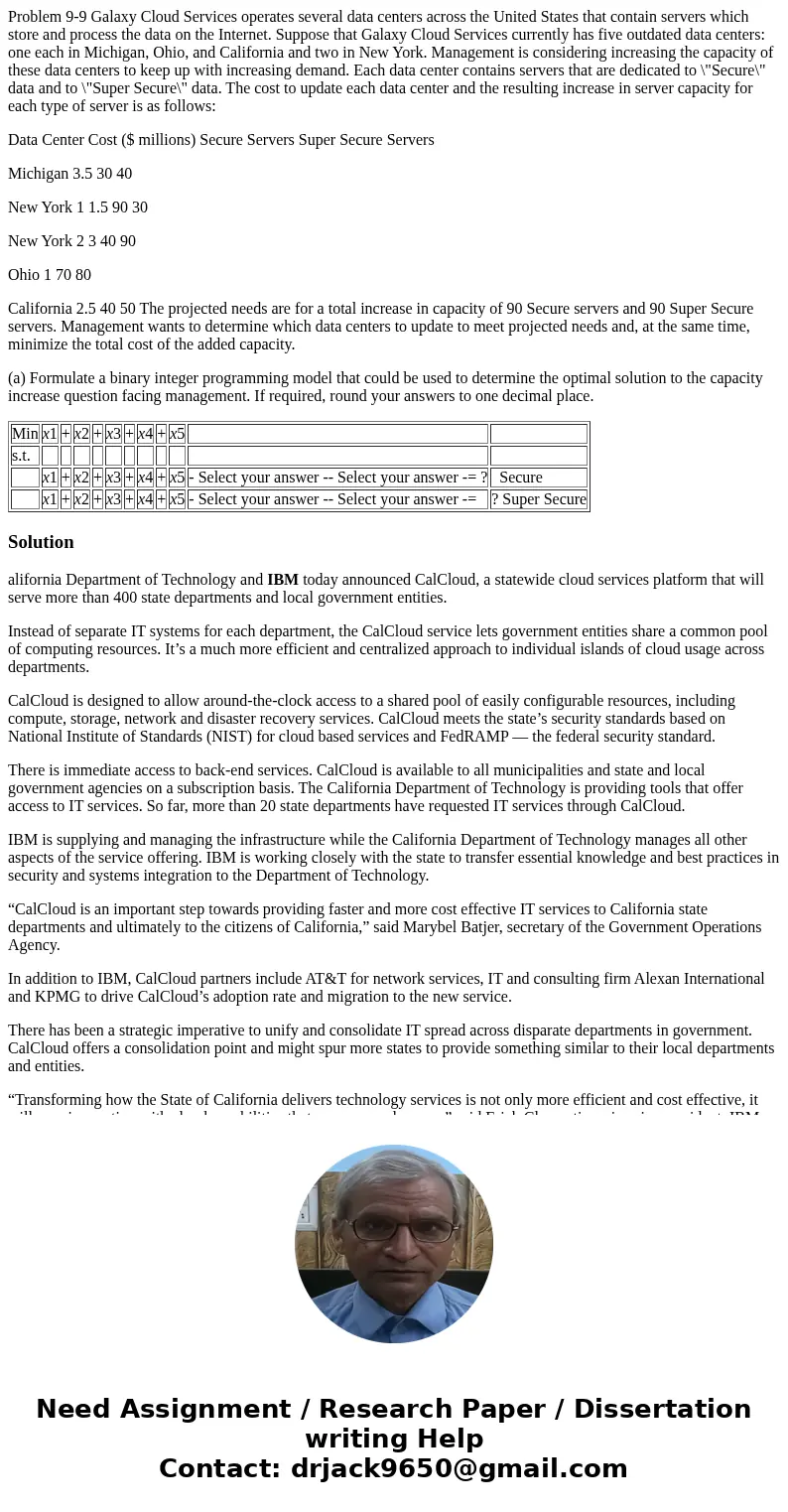Problem 99 Galaxy Cloud Services operates several data cente
Problem 9-9 Galaxy Cloud Services operates several data centers across the United States that contain servers which store and process the data on the Internet. Suppose that Galaxy Cloud Services currently has five outdated data centers: one each in Michigan, Ohio, and California and two in New York. Management is considering increasing the capacity of these data centers to keep up with increasing demand. Each data center contains servers that are dedicated to \"Secure\" data and to \"Super Secure\" data. The cost to update each data center and the resulting increase in server capacity for each type of server is as follows:
Data Center Cost ($ millions) Secure Servers Super Secure Servers
Michigan 3.5 30 40
New York 1 1.5 90 30
New York 2 3 40 90
Ohio 1 70 80
California 2.5 40 50 The projected needs are for a total increase in capacity of 90 Secure servers and 90 Super Secure servers. Management wants to determine which data centers to update to meet projected needs and, at the same time, minimize the total cost of the added capacity.
(a) Formulate a binary integer programming model that could be used to determine the optimal solution to the capacity increase question facing management. If required, round your answers to one decimal place.
| Min | x1 | + | x2 | + | x3 | + | x4 | + | x5 | ||
| s.t. | |||||||||||
| x1 | + | x2 | + | x3 | + | x4 | + | x5 | - Select your answer -- Select your answer -= ? | Secure | |
| x1 | + | x2 | + | x3 | + | x4 | + | x5 | - Select your answer -- Select your answer -= | ? Super Secure |
Solution
alifornia Department of Technology and IBM today announced CalCloud, a statewide cloud services platform that will serve more than 400 state departments and local government entities.
Instead of separate IT systems for each department, the CalCloud service lets government entities share a common pool of computing resources. It’s a much more efficient and centralized approach to individual islands of cloud usage across departments.
CalCloud is designed to allow around-the-clock access to a shared pool of easily configurable resources, including compute, storage, network and disaster recovery services. CalCloud meets the state’s security standards based on National Institute of Standards (NIST) for cloud based services and FedRAMP — the federal security standard.
There is immediate access to back-end services. CalCloud is available to all municipalities and state and local government agencies on a subscription basis. The California Department of Technology is providing tools that offer access to IT services. So far, more than 20 state departments have requested IT services through CalCloud.
IBM is supplying and managing the infrastructure while the California Department of Technology manages all other aspects of the service offering. IBM is working closely with the state to transfer essential knowledge and best practices in security and systems integration to the Department of Technology.
“CalCloud is an important step towards providing faster and more cost effective IT services to California state departments and ultimately to the citizens of California,” said Marybel Batjer, secretary of the Government Operations Agency.
In addition to IBM, CalCloud partners include AT&T for network services, IT and consulting firm Alexan International and KPMG to drive CalCloud’s adoption rate and migration to the new service.
There has been a strategic imperative to unify and consolidate IT spread across disparate departments in government. CalCloud offers a consolidation point and might spur more states to provide something similar to their local departments and entities.
“Transforming how the State of California delivers technology services is not only more efficient and cost effective, it will spur innovation with cloud capabilities that are open and secure,” said Erich Clementi, senior vice president, IBM Global Technology Services. “California is setting an example for other states on how to use cloud technology to improve coordination across agencies and municipalities while reducing the barriers and duplication that can impede the delivery of government services.

 Homework Sourse
Homework Sourse